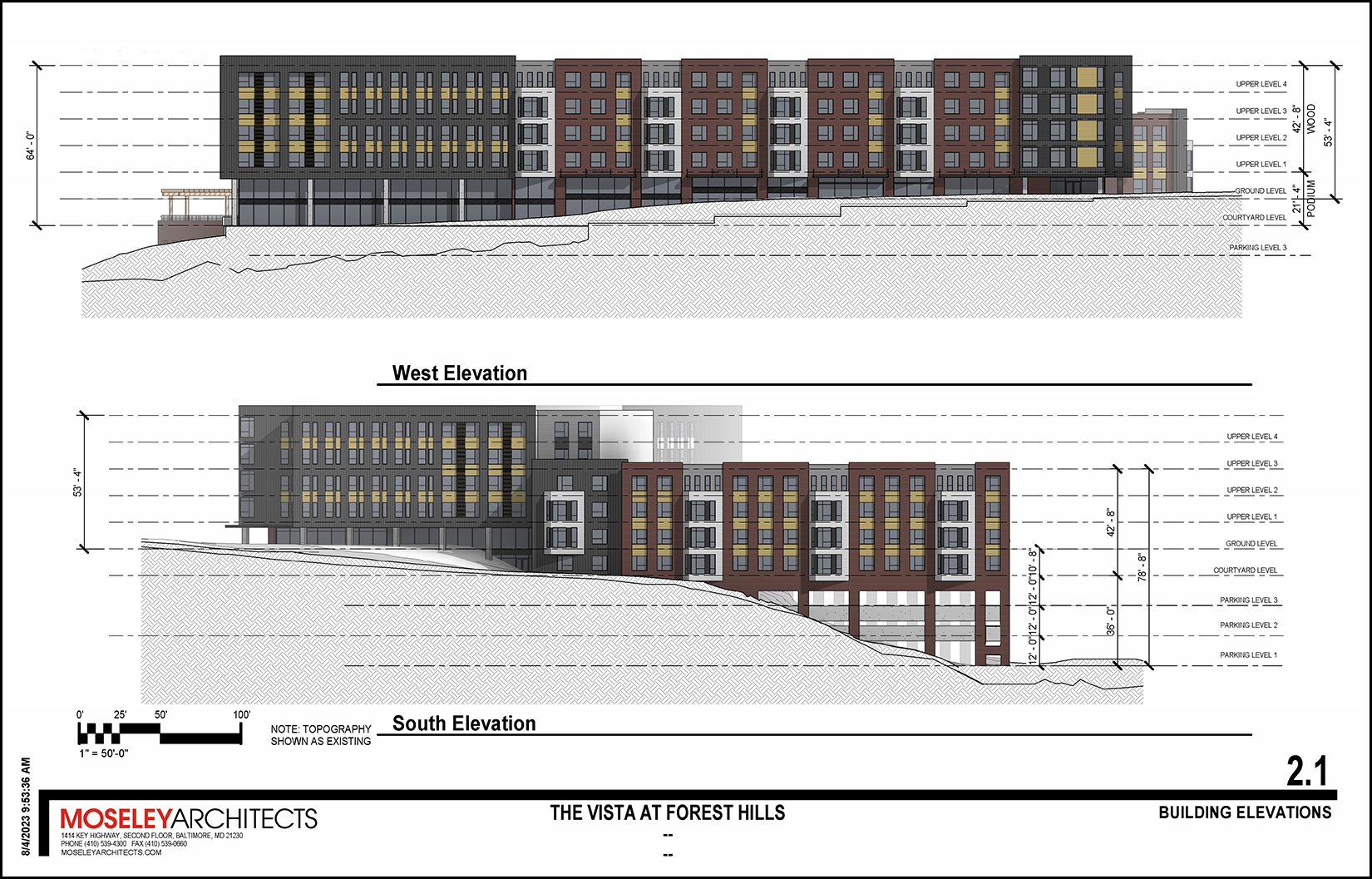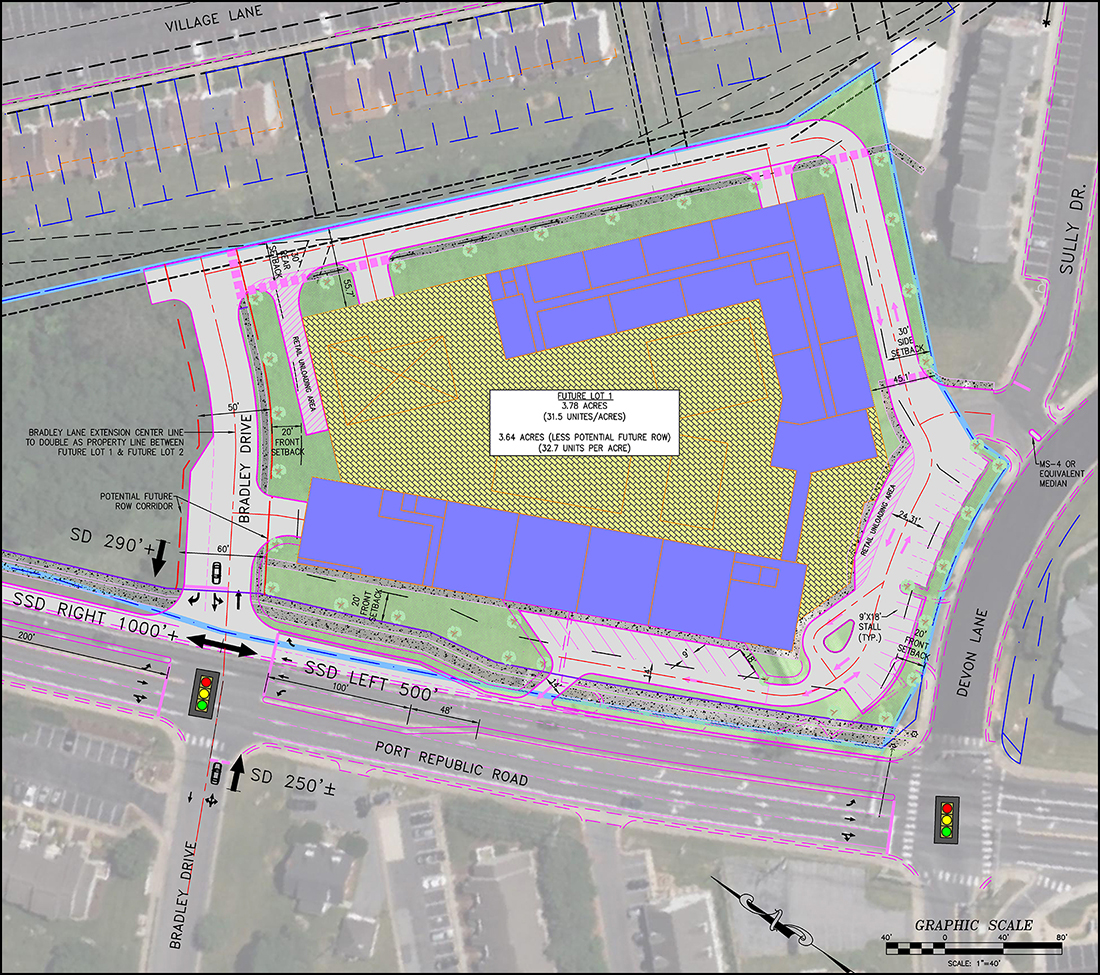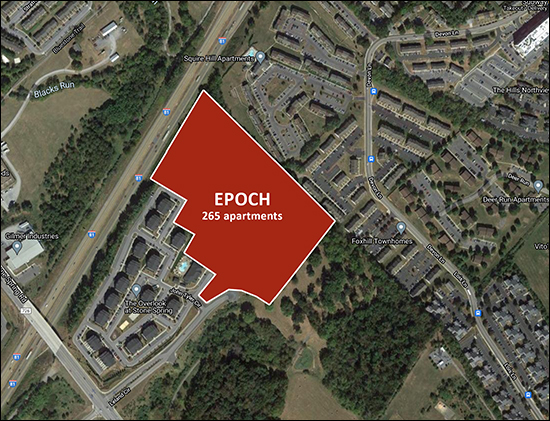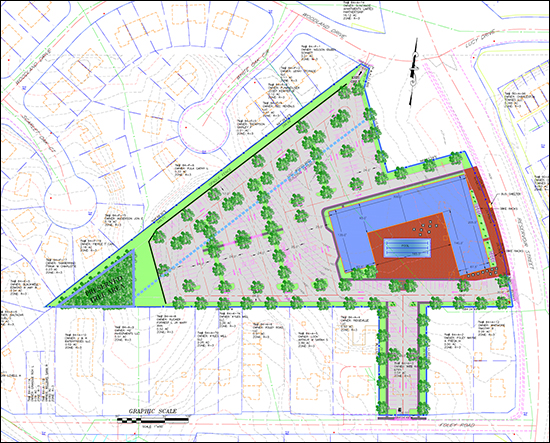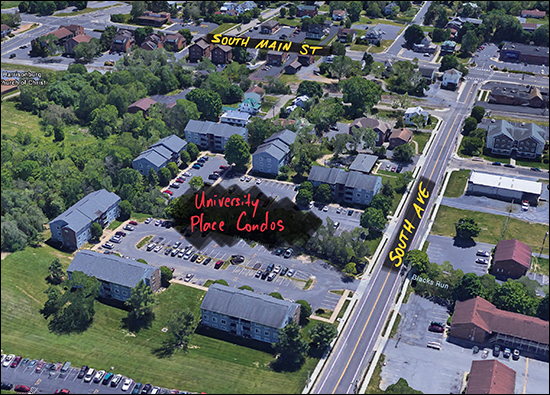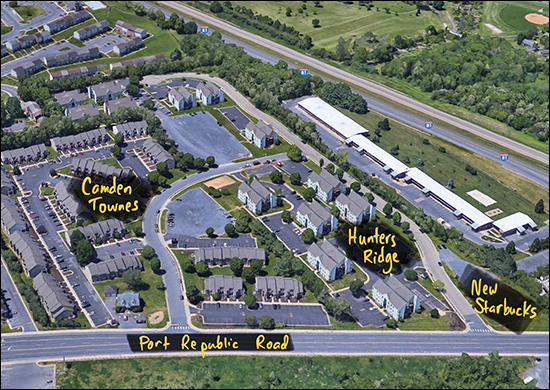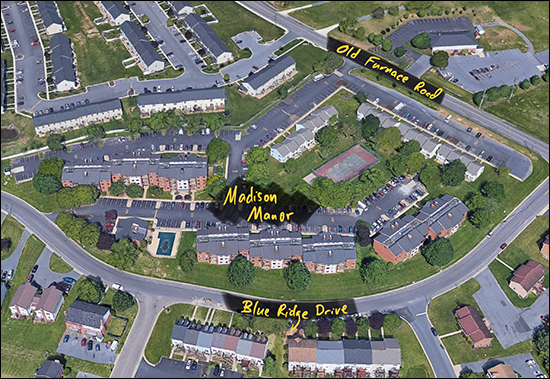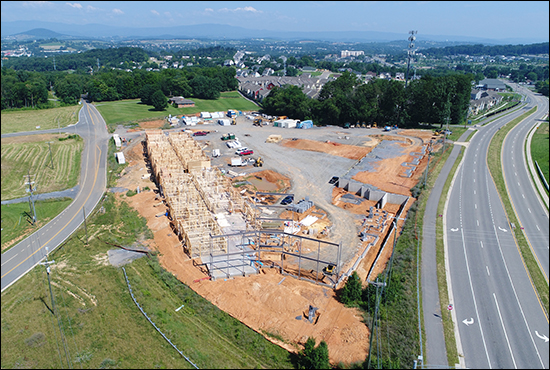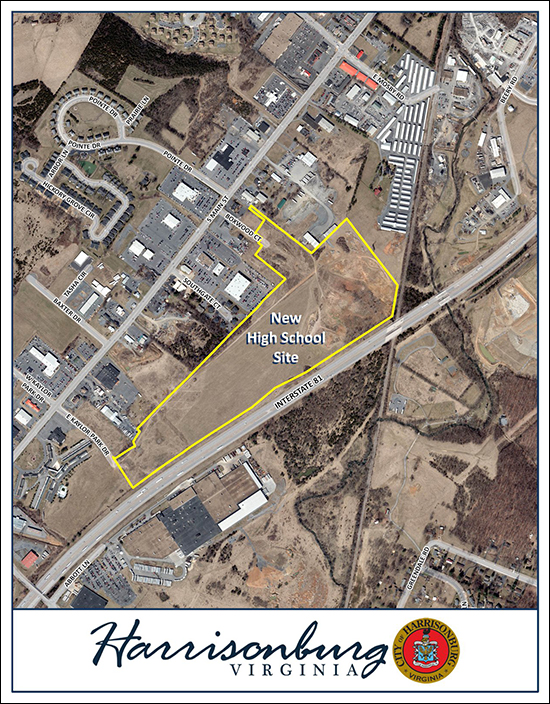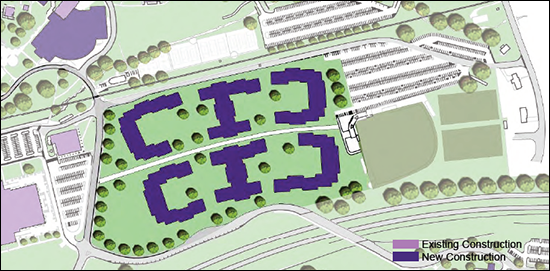| Older Posts |
Proposed Expansion Of Student Housing Complex, 865 East, To Include 60 More Apartments For A Total Of 160 |
|
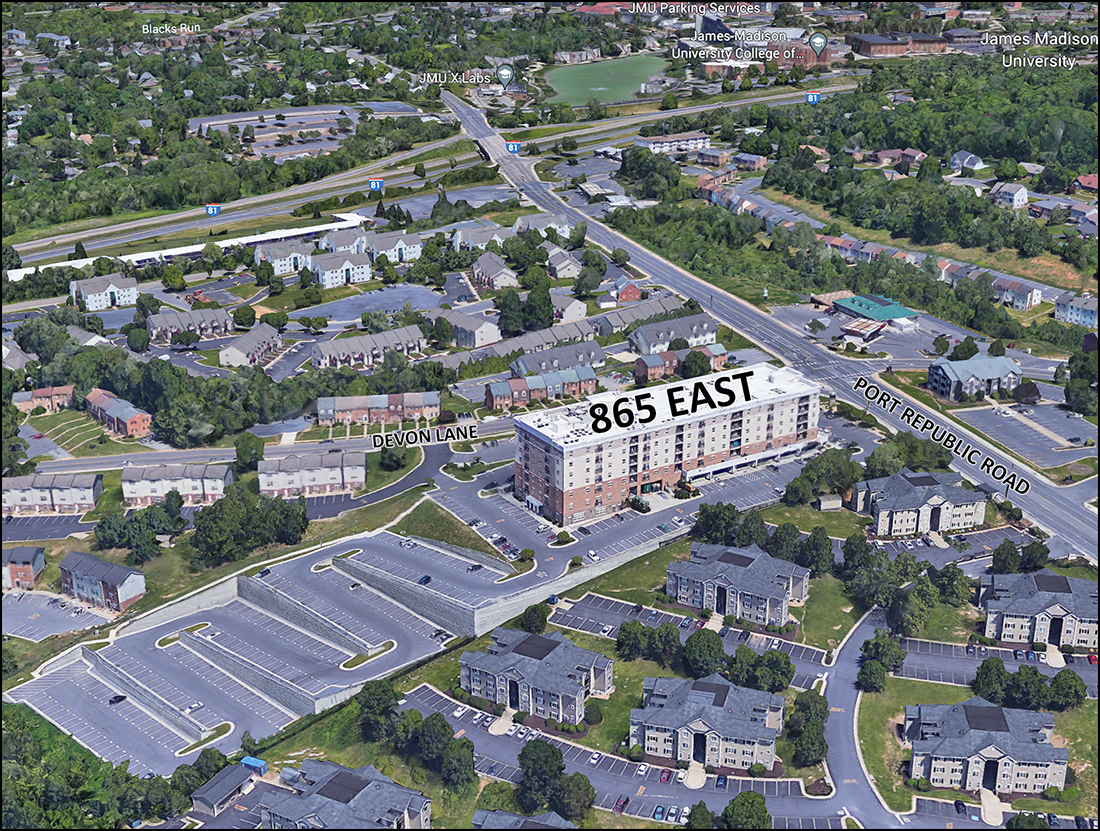 The student housing development at the corner of Port Republic Road and Devon Lane -- 865 East -- may be expanding in the near future. The owner has requested that the City rezone the property and provide a special use permit to allow for an expansion of this mixed use property. 865 East currently features 100 apartments and retail on the ground level. The proposed addition would include 60 more apartments connected to the first building via an elevated breezeway. Here is the potential layout of the addition... 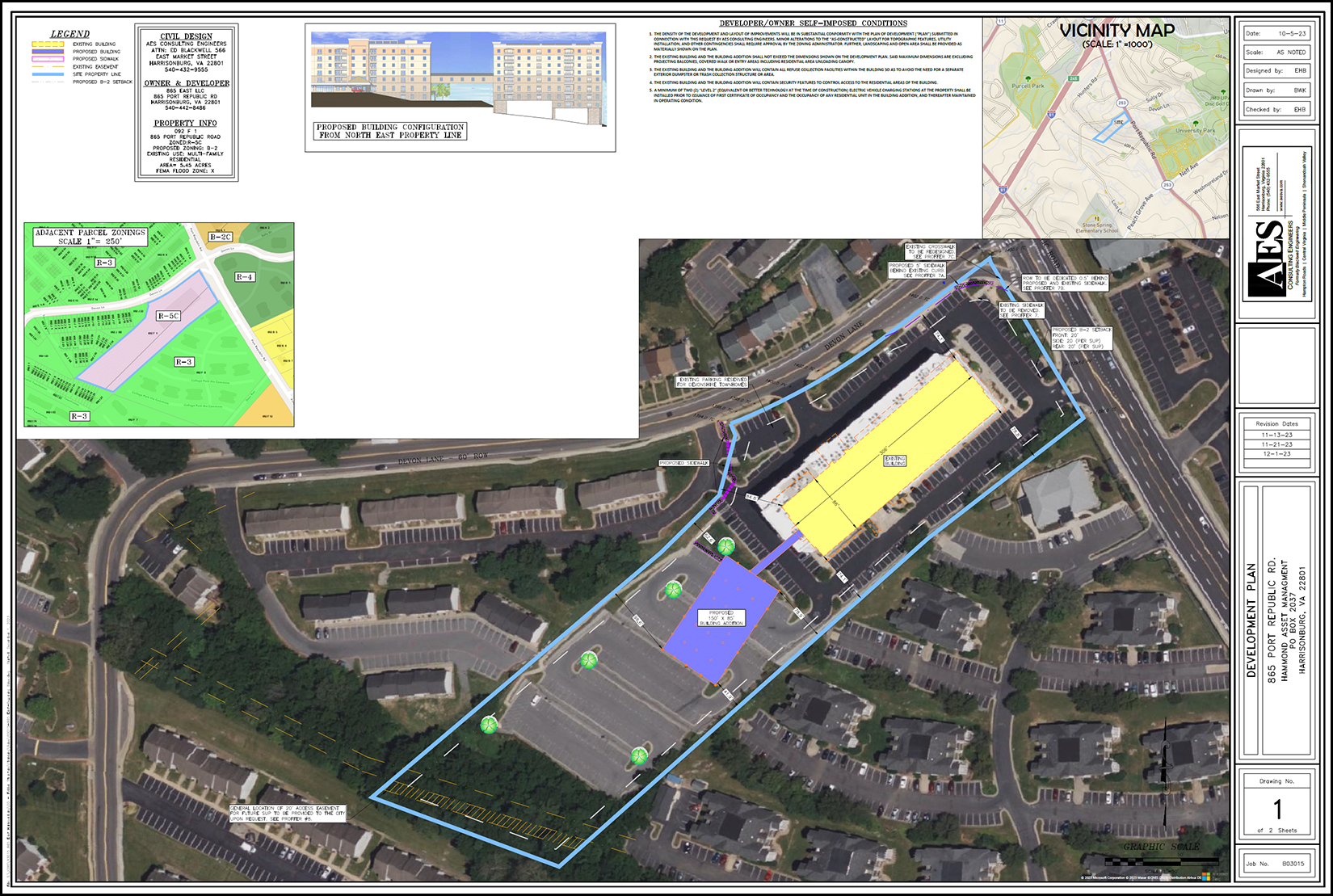 Here's a slightly larger view of the potential new profile of the building and addition, connected by an elevated breezeway... 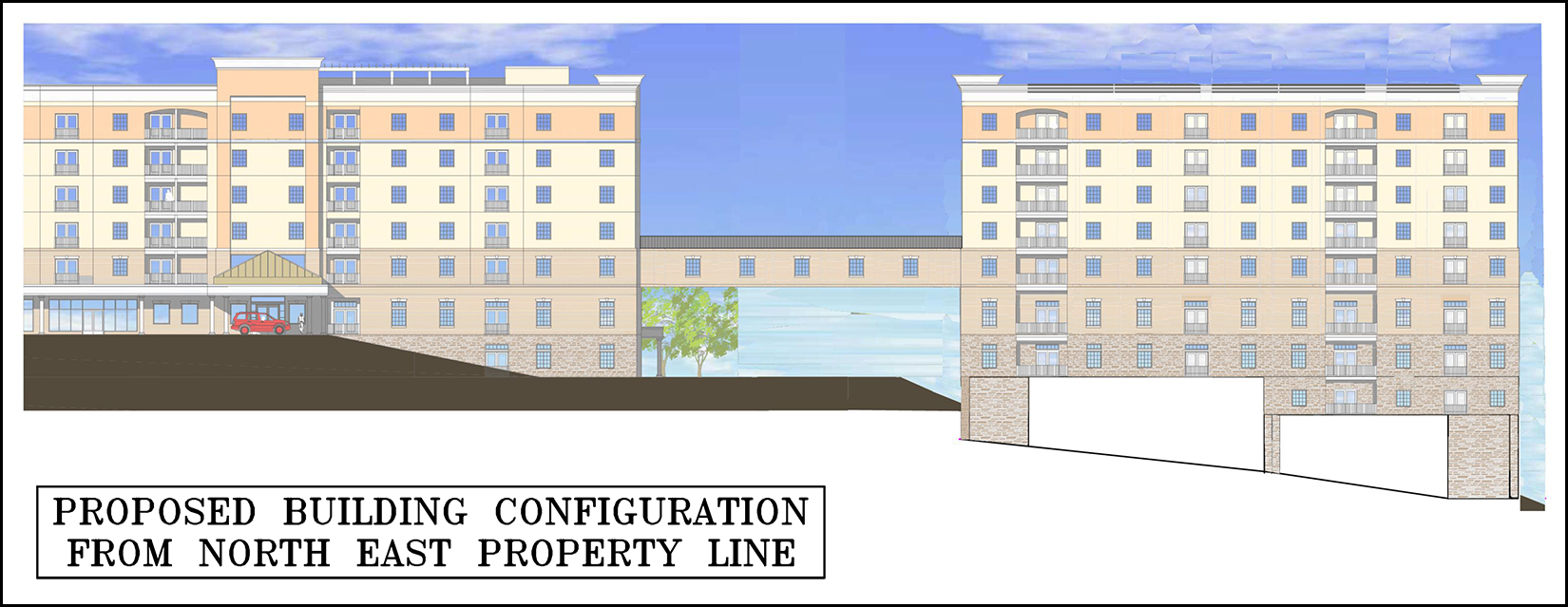 The Planning Commission reviewed this request earlier this week (details here) and they recommended that City Council approve the rezoning and special use permit to allow for this expansion of 865 East. | |
119 Apartments, Convenience Store, Restaurant Proposed At Intersection Of Port Republic Road and Devon Lane |
|
A new development, The Vista at Forest Hills, is being proposed at the intersection of Port Republic Road and Devon Lane, at the current location of a Citgo gas station. The applicant would like to redevelop the site to include a convenience store, restaurant and 119 student apartments. Per the letter from the developer's engineer... [1] The student apartments would consist of no more than 440 bedrooms. [2] The development would have up to three floors of parking garages. Here's another rendering of the proposed structure, from another angle... For one more vantage point, here are two elevations showing how the building will work with the grade of the site... Finally, here's the site plan where you can see how this parcel relates to Port Republic Road, Devon Lane, Bradley Drive and Village Lane... A public hearing will be held on August 9th (Wednesday) related to this proposed development during the City of Harrisonburg Planning Commission meeting. This proposed development would require both a rezoning and a special use permit. Per the Planning Commission packet, City staff has significant concerns about this proposed development regarding "compliance with the SUP development plan requirements and matters associated with the maximum height and minimum setback requirements, parking lot landscaping requirements, and questions regarding proffer statements." Staff is recommending that the Planning Commission hold the public hearing on August 9th but then table the request until their following meeting to allow staff to complete more analysis of the proposed plan and provide further feedback to Planning Commission. | |
376 Apartments In Three Buildings, With Clubhouse, Pool and Parking Deck Proposed For Peach Grove Avenue |
|
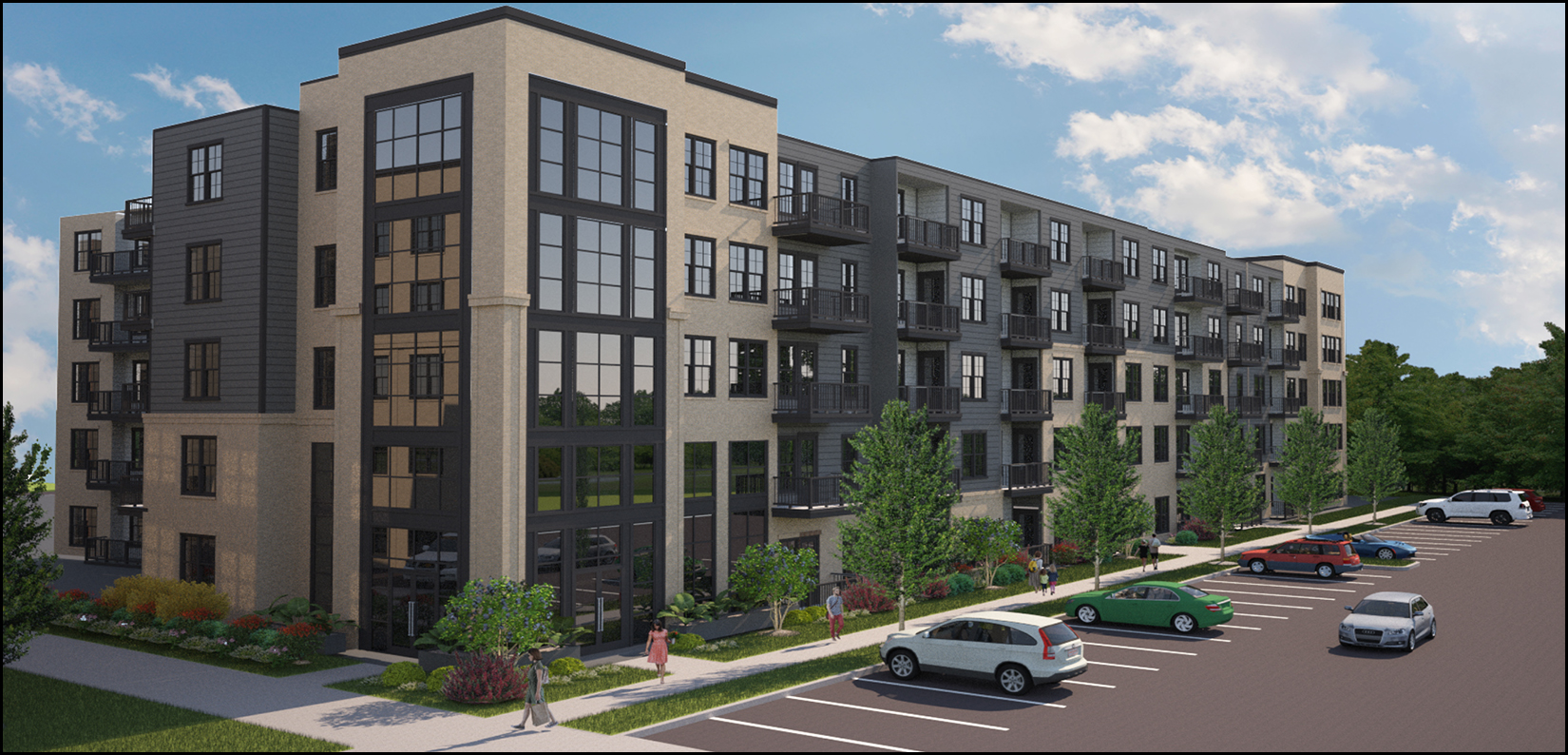 Lingerfelt Development, LLC is requesting a special use permit from the City of Harrisonburg to allow for the development of a 376 unit apartment complex on Peach Grove Avenue on a 9.9 acre parcel of land between The Hills (Southview) Apartments and the proposed 460 bedroom student housing complex, Peach Grove Shoppes. This new proposal for 376 apartments would include... [1] A minimum of 30% studio or one bedroom apartments [2] A maximum of 20% of three bedroom apartments [3] No apartments with more than three bedrooms Here's the proposed layout of the development... 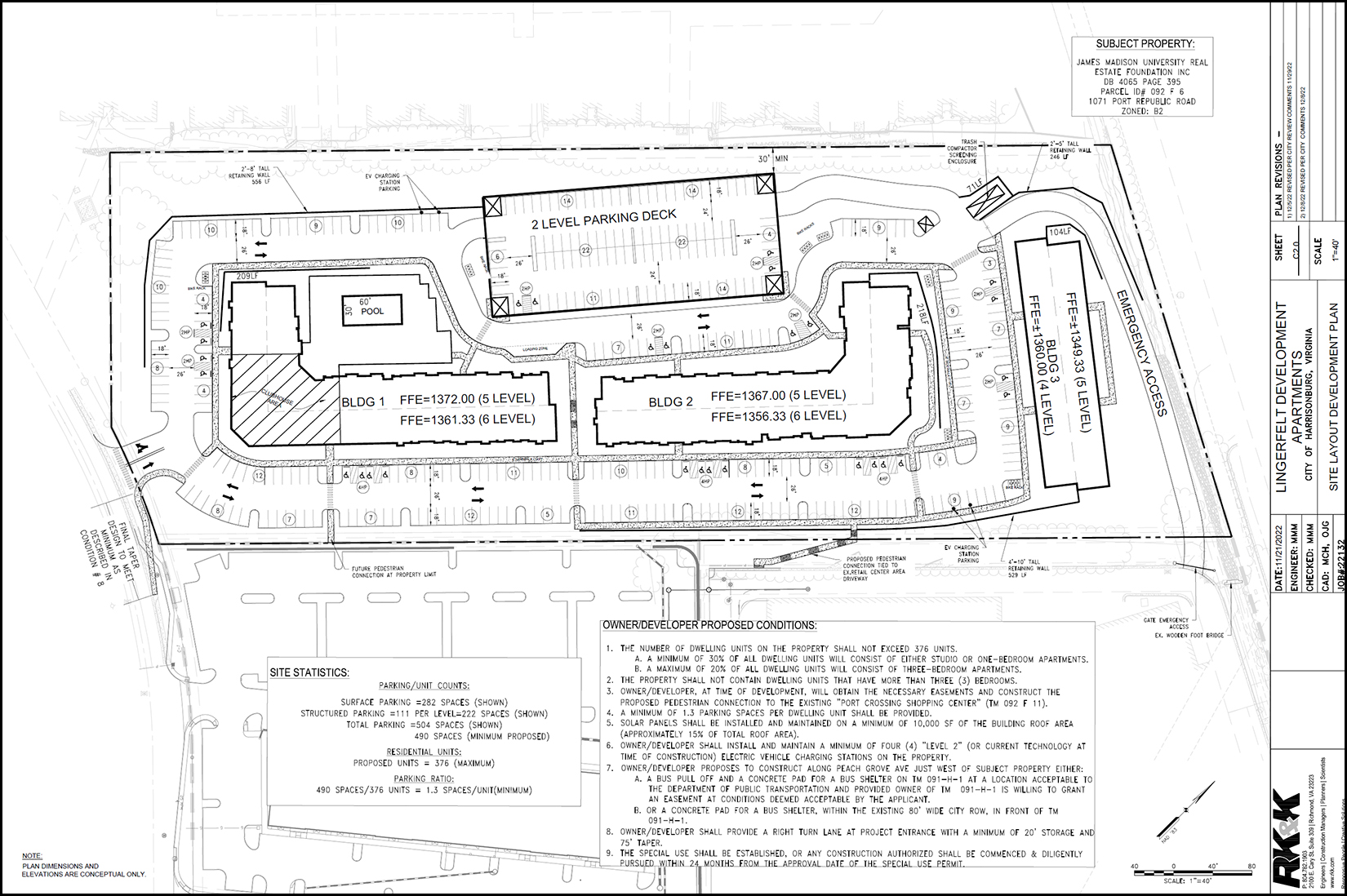 The land for this proposed development is currently owned by the James Madison University Real Estate Foundation. Here's the location of the proposed development... 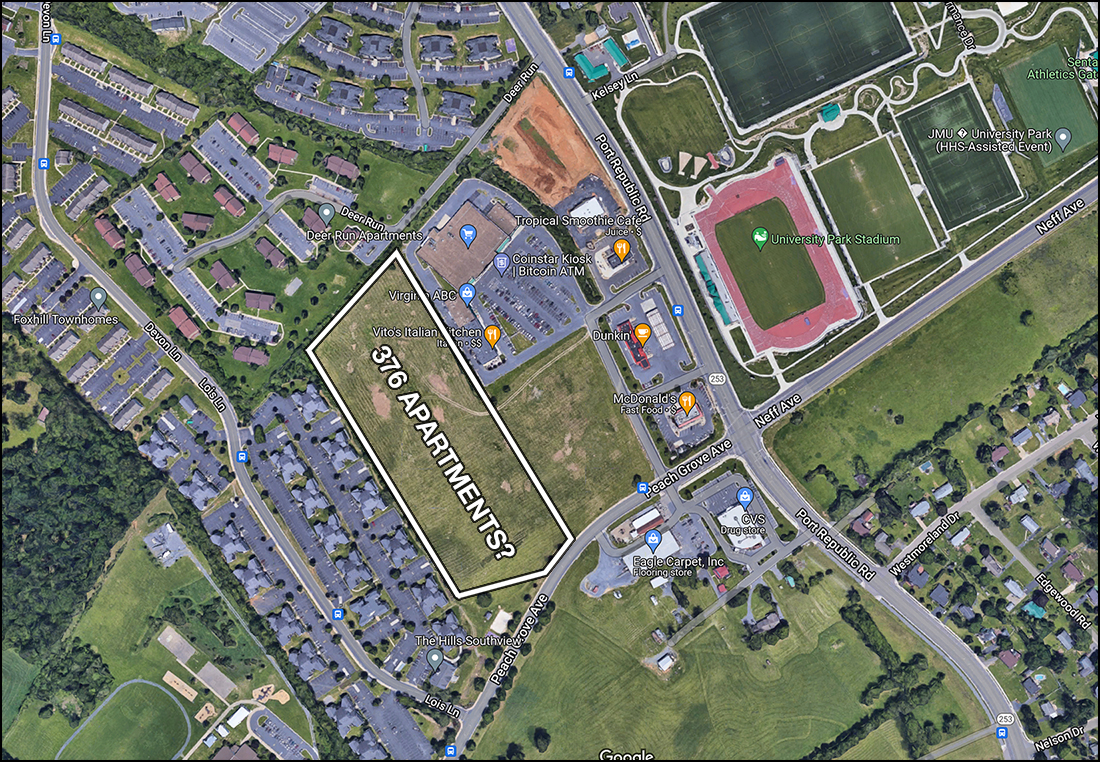 Read up on all of the details of this proposed development in the special use permit application packet here. 12/14/2022 - tabled by Planning Commission
| |
Does Building College Student Housing In Harrisonburg Impact City Schools? |
|
 At first glance, the answer to this question seems obvious... If more college student housing is built in Harrisonburg, those college students are very unlikely to have children attending K-12 schools in the City of Harrisonburg. So, there is not a connection between college student housing construction and K-12 student population, right? Well... maybe there actually is an indirect connection... Using some rough, and certainly inaccurate numbers, let's pretend... [1] There are 21,000 students at JMU. [2] Of those, 7,000 students live on campus. [3] Thus, 14,000 students live off campus. And let's pretend that today, there is enough off campus college student housing for... magically... 14,000 students. Clearly, it's not this cut and dry, but I can pretend. Now, what happens when more off campus college student housing is built? What happens when there is enough new housing to fit 500, 1000 or 2000 more college students? First off, yes, JMU is growing and will continue to grow over time... but not that fast!? Now, after this new off campus college housing for 2,000 more students is constructed we will have off campus student housing for 16,000 college students... but only 14,000 college students who need housing! What seems to inevitably happen in Harrisonburg, is that when new off campus student housing is built... some of the existing (usually older) off campus student housing is no longer occupied by college students. And then, yes, the new tenants... who are not college students... may have children... who would attend City schools. So, while it may seem at first glance that building off campus college student housing does not impact the City school population (and thus the City budget to pay for educating more students) it seems that this new off campus college housing actually can indirectly impact City schools. As to the illustration above... A = More New Off Campus College Housing B = More Vacancies in Off Campus College Housing C = Off Campus College Housing Occupied By Non College Students D = More K-12 Students Attending City Schools If A=B and if B=C and if C=D... then, does A=D? A few pretty broad disclaimers... 1. I'm not saying it's a bad idea to build more off campus college housing. 2. I am saying it's a good idea to discuss and understand the primary and secondary impacts of building new off campus college housing... or any other type of housing. 3. I'm not saying it's a bad thing to have non college student rental housing created through increased vacancies at what were previously college student housing complexes. Perhaps that's a good thing... or a normal part of the housing cycle in a college town? As with most of my writing about the dynamics of our local housing market... I'm not trying to convince you that one thing or the other is a good or bad... I'm just trying to get some discussion points out there for you, and others, to consider and decide what you think. :-) | |
460 Bedroom Student Housing Complex Proposed For Neff Avenue |
|
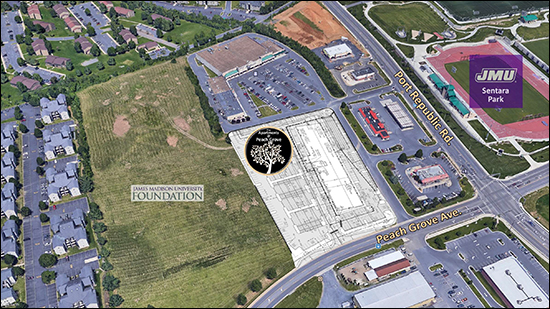 On August 11, 2021 the City of Harrisonburg Planning Commission will consider a request from Forbes Development to amend the proffers for a 5.44 acre parcel on Neff Avenue near its intersection with Port Republic Road. The property is currently zoned R-5C and the developer previously planned to build one, six-story mixed-use building with non-residential and multi-family residential units. The plan was for the building to include 16,000 SF of retail space such as restaurants, coffee shops, bookstores, clothing retailers, convenience stores, etc. When the developer had gone through the process of rezoning the property to R-5C and obtaining special use permits to allow for the construction of the above referenced project, the developer had referenced the building including a mix of (20) one bedroom apartments, (20) two bedroom apartments, (30) three bedroom apartments and (50) four bedroom apartments - which presumably might be student housing, or possibly not... Within a year of the rezoning and special use permits being approved, the developer began the further planning of the project but began to only reference including (100) four bedroom units -- which would clearly be designed to be entirely student housing. 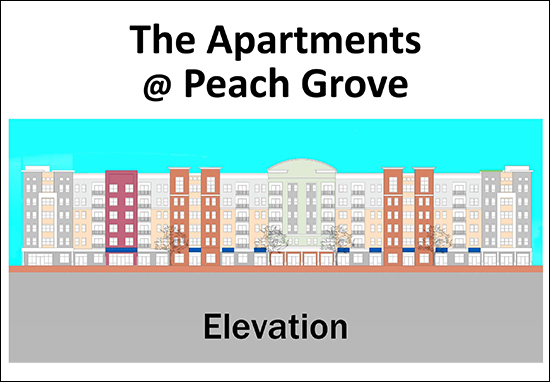 Now, however, the developer does not want to build the project as previously planned as a multi-family development -- with apartments over top of commercial / retail space. The developer is now asking the City for permission to amend the proffers to allow for the project to be a single six-story apartment building without any commercial or retail uses and they want the project to allow for more bedrooms in the apartments. The original proffers would have allowed for 400 bedrooms and the developer is now requesting permission to have 460 bedrooms in total. The developer indicates they are requesting the removal of the commercial/retail space because of changes in the commercial real estate market due to Covid. The developer does not seem to have spoken to their pivot from having 1, 2, 3 and 4 bedroom apartments -- to having almost all (104 of 126) four bedroom apartments. City staff does not recommend that these changes be approved because they do not believe more student housing is needed at this time. Planning Commission will now review this request and will forward their recommendation to City Council who will make the final decision about whether to allow these changes for another 460 bedrooms of student housing on Neff Avenue. Read up on more details of these proposed changes in the City Council packet here. | |
265 (More) Apartments Planned For Stone Spring Road |
|
Harman Realty and Stone Spring Holdings LLC are proposing to build 265 apartments in a development to be called EPOCH on Stone Spring Road, between The Overlook at Stone Spring and Squire Hill Apartments. These apartments would be built on the 17 acres shown above. The proposed site plan references cottages, townhouses and apartments -- but they all seem to be multiple dwelling units per building, so they might all feel like apartments? City staff recommends approval of this proposal, as does the Planning Commission. City Council will have the final say on the matter in the near future. 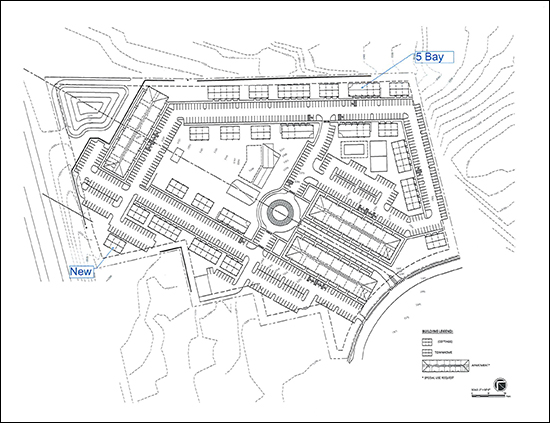 | |
Prices Are Skyrocketing At Camden Townes |
|
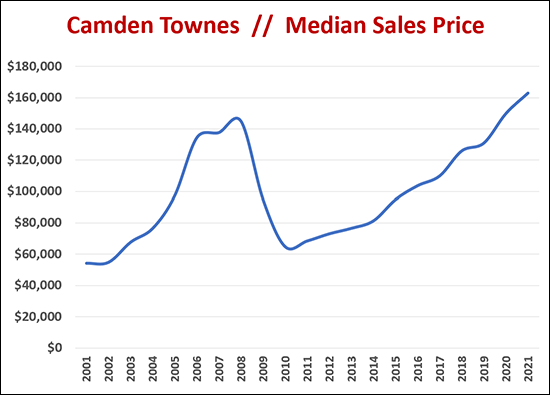 Camden Townes is a rental community on Port Republic Road within walking distance to the JMU campus. This community has historically been a student housing community and my understanding is that it is still primarily, but not entirely, students living in these properties. As shown above, the values at Camden Townes have been skyrocketing over the past several years. A few benchmarks...
I suspect many factors likely affect the values in this mostly-student housing community...
As to what values will be in Camden Townes in 2022 or 2023 or 2024 -- it's hard to say based on the turbulent past of values in this community. I suppose a counter-narrative to the "who knows" perspective would be that values have mostly always gone up except during the 2006-2010 housing boom and bust? | |
Why Is Unmet Home Buyer Demand So High In Harrisonburg? |
|
 Earlier this week I was chatting with some friends and clients who relocated out of Harrisonburg (out of state) nearly a decade ago. They are now looking to move back to Harrisonburg and are accurately observing that our local housing market is at a drastically different point now than it was a decade (+/-) ago when they left. The most pressing issue at hand for them, as soon-to-be buyers in this market, is the extraordinary high level of unmet home buyer demand. And so we pondered aloud why in the world buyer demand is so high in Harrisonburg. Here's my overly condensed thesis...
Put differently, with some make believe numbers, to illustrate the point... 2010 = population of 50,000 2020 = population of 55,000 Increased population = 5,000 5000 newly built housing options between 2010 and 2020:
The problem, then, is that many more than 500 (10%) of the new population want to buy single family detached homes -- but that is not what has been built over the past decade. Further exacerbating the problem is that plenty of the already existing 50,000 population also wants to move up to a single family detached home, putting more and more pressure on that segment of the market. So - the population is increasing and housing options are increasing, but the housing that is being created is not matching what the expanding population desires. Why!? Basically, it's all about profitability as a developer. For all the ways to develop a 10 acre parcel of land, this is a rough approximation of the ranking of their potential profitability...
At this point, most land being developed is not being developed for single family homes because that is not the most profitable way to develop the land. So long as student housing keeps being rented as soon as it is built, and non-student apartments keep being rented as soon as they are built, and townhouses keep being rented as soon as they are built, and townhouses for sale keep being bought before they are built -- it remains relatively unlikely that land in or close to Harrisonburg will be developed for single family homes. I am now accepting recommendations for more cheery perspectives to write about next week. Call. Text. Email. Help! ;-) | |
600 Bed Student Housing Development In Rockingham County Sold For $39.8 Million |
|
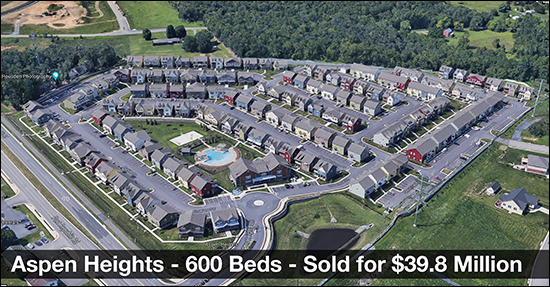 As detailed in the Daily News Record ("National Firm Buys Aspen Heights, Plans Rebrand") the 600 bed student housing development on Port Republic Road in Rockingham County - just outside the City of Harrisonburg - has been sold to Campus Apartments, a large student housing company that owns over $2 billion dollars of assets, near more than 50 colleges and universities in 15 states! Wow! Looking at the raw numbers...
Aspen Heights is located here. Read more in the Daily News Record article. | |
Different Strategies for Buying A Rental Property For Your College Student |
|
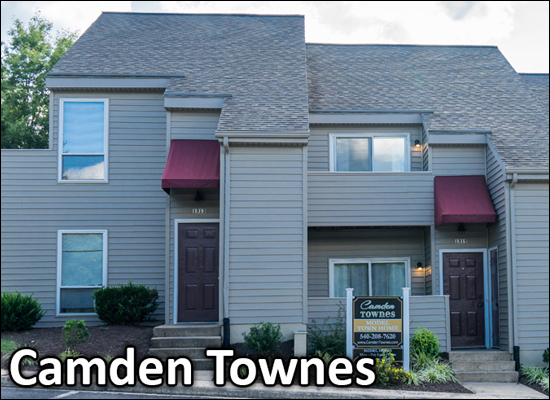 Option 1 -- A property in a traditional student housing neighborhood. These will allow the most students to live in the property and will maximize the rental income per dollar spent on the purchase. However, it will also expose you to a more turbulent segment of the market, as rental rates and sales prices of these properties can vary quite a bit over time as the supply of competing student housing ebbs and flows based on large complexes being built by student housing developers. You can find purchase options in this category here. Option 2 -- A townhouse in a community that has many owner occupants, some non-student renters and some student renters. Many of these will not allow as many unrelated students to live in the property (per zoning regulation or restrictive covenant) and will not provide quite as much rental income per dollar spent on the purchase price. However, they will be in segment of the real estate market that is much more predictable and less volatile from a rental rate and/or sales price perspective. You can find purchase options in this category here and here. I work with parents of JMU students each year who go down each path outlined above, each for different reasons. Most of the time, though, it boils down to their tolerance for risk or their desire for reward. It can also be related to their intended time horizon for owning the property. If you are interested in buying a rental property for your son or daughter to live in while they are at student at JMU, let me know. Oh, and you might also want to read up here... | |
JMU On Campus Enrollment Seemingly Plateauing Just Under 21K |
|
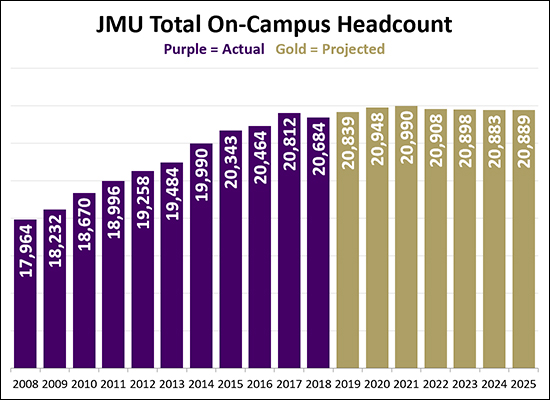 Based on JMU's enrollment projections approved by the State Council of High Education for Virginia, on campus enrollment...
These figures, and their changes over time, are the best numbers to be using when analyzing the need for off campus student housing in Harrisonburg -- and seem to be indicating that our local market does not need more student housing -- since enrollment is only anticipated to rise by 205 students between now and 2025. | |
Six Story Mixed Use Building Proposed on 6.6 Acres on Reservoir Street |
|
view as PDF Two parcels totaling 6.6 acres might soon be home to six-story mixed use building to include:
Here's a map more clearly showing the surrounding properties... City staff recommends approving the development, noting that...
At the Planning Commission meeting, owners of some of the neighboring properties expressed concerns...
The Planning Commission recommended denial of three of the four requests from the developer. They recommended that City Council not rezone the property, not allow more than 12 units in a building on the property and not allow the building to be more than four stories or 52 feet -- though they did recommend that City allow non-residential uses in a building with R-5 zoning, though that would require the property to be zoned R-5. So -- City staff supports the proposed development and the Planning Commission does not. Next up -- City Council! When City Council met earlier this month they ended up holding off on a vote as to whether to allow for this development, since one of the members of City Council (George Hirschmann) was not present. They will meet today to review the requests again and to potentially vote on whether to approve them. | |
Can Parents of JMU Students Buy Any House And Put Lots of Students In It? |
|
 With great regularity, potential buyers (either investors or parents of JMU students) will ask if a single family home can be purchased and rented to a group of JMU students -- often an intended group of four or more students. I let them know that it will be no problem at all -- the adjoining property owners in the quaint neighborhood probably won't mind as long as the students aren't too bothersome -- and the City doesn't mind at all if their zoning ordinances are violated, so long as it's just "nice college kids".... WAIT! NOT REALLY! READ ON!!!! It seems that some buyers are really getting that feedback of "sure, it will be fine" -- though I'm not sure if they're getting it from their Realtor, or from someone else advising them in the transaction, or if they just aren't thinking about whether their planned use of a property is allowable. The REAL answer, and the feedback that I ACTUALLY provide to my clients is.... 1. We need to check to see how this property is zoned, and whether that zoning classification allows for that number of unrelated people to live in the property. 2. We need to check to see if there are recorded restrictive covenants for this neighborhood that restrict the number of unrelated people who live in the property. A few notes.... 1. Most single family homes in the City of Harrisonburg are zoned R-1 or R-2 and do NOT allow for three or more unrelated people (students or otherwise) to live in the property. 2. If a property has been used in a non-conforming manner (for example, four students living in it) since before the zoning ordinance was put in place, without a 24 month gap in the non-confirming us, it MIGHT be possible to continue to use the property in that non-conforming manner. And, if #2 above is starting to get confusing, then we arrive at my main reason for writing today.... CALL COMMUNITY DEVELOPMENT TO UNDERSTAND ALLOWED USE OF A PROPERTY! Yes, in fact, there are very helpful City staff in the Community Development department -- who can very quickly help you understand whether a property can be legally used as you intend to use it. And it is imperative that you make this call BEFORE you buy the property, and even BEFORE you make an offer on the property! | |
Some Student Housing Eventually Becomes Affordable (Non Student) Housing |
|
Sometimes it seems CRAZY how much NEW, NICE, EXPENSIVE student housing is being built in Harrisonburg - and now even in Rockingham County. So what happens to all of that older student housing stock when the newer student housing becomes available to students? Quoting fellow Realtor, Ritchie Vaughn (thanks Ritchie!) from a Facebook dialogue a few days ago... "Many of the most affordable spots for working families in Harrisonburg today are complexes that were initially build for students, like Madison Manor, Camden Townes, Hunters Ridge, South Ave condos, etc, so we have some robust historical support that the student complexes of today will likely turn into affordable housing in the future." The neighborhoods that Ritchie references are the ones I have pictured above, and indeed, while they were originally built as student housing complexes, I don't think any of them are "mostly students" any longer. 1. Does anyone know/believe any of these complexes to really still be mostly students? (It's not my understanding, but I welcome other perspectives.) 2. What other complexes in Harrisonburg were built to be student housing and now are not? | |
JMU On Campus Headcount Likely To Exceed 22K in 2022 |
|
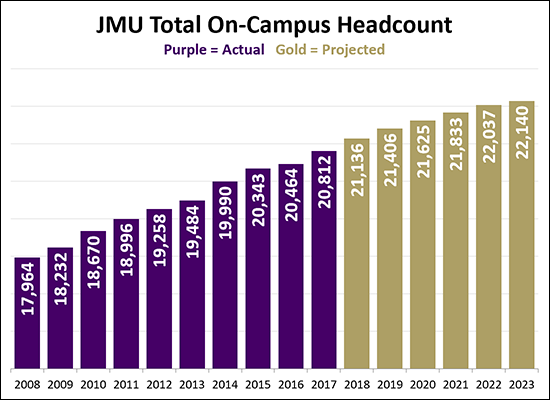 Based on enrollment projections approved by the State Council of High Education for Virginia, on campus enrollment is set to continue to increase in coming years....
| |
College Student Housing Under Construction on Port Republic Road |
|
If you've driven on Port Republic Road lately, near Bojangles, you might have noticed construction starting to peek over the top of Port Republic Road. Above is an photo of the construction progress. And here are some images of the planned 425-bed college student housing community... | |
Land for New High School Was To Be Student Housing, then Convocation Center |
|
Have you heard Harrisonburg needs a second high school? The current (only) high school in the City is beyond capacity. As such, the City has been evaluated various pieces of land to find a suitable new site for the new high school -- and now they have made a decision. Background... Owners of median priced City homes might have to pay $26 more per month to fund new City high school So, back to the location... The parcel of land shown above is 60 acres located between South Main Street (Route 11) and Interstate 81. The City intends to purchase this land for five million dollars from JMU. But JMU has actually owned it for a few years. You see, this land was actually originally slated to be used for college student housing! More background... So... the land was originally going to house 466 apartments for college students... And then it was to be the site of JMU's new convocation center... 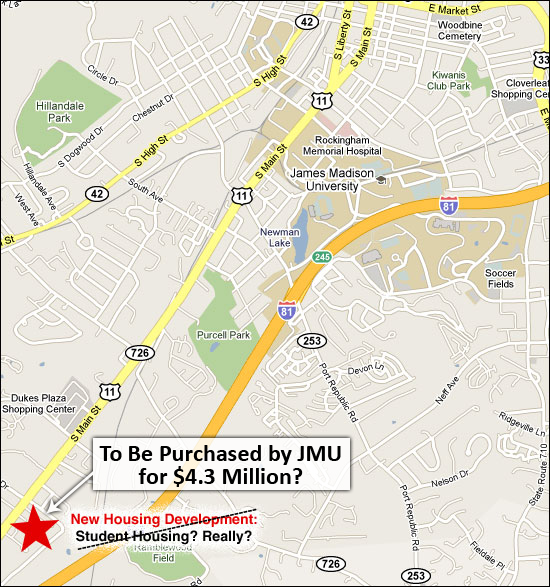 And now, the site of Harrisonburg's second high school. Read today's Daily News Record article for further context... | |
Analysis of JMU On Campus Housing |
|
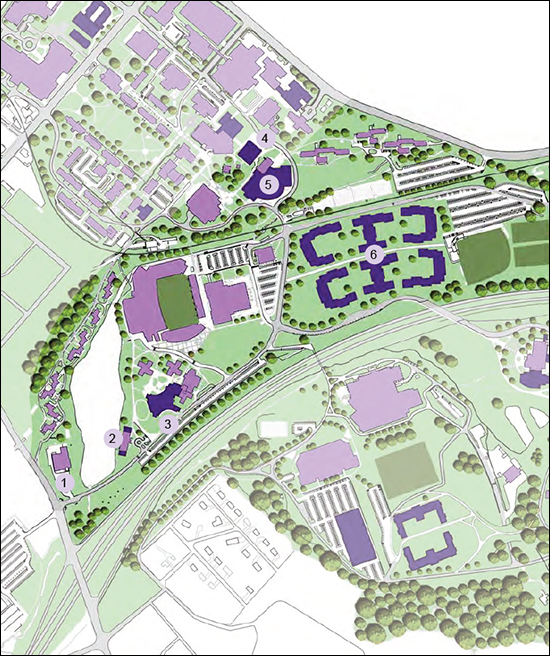 (Post updated afternoon of 3/26/2018 with additional notes per the second phase of the East Campus residence hall -- thanks Matt Phillippi) The updated Master Plan for James Madison University offers a fascinating read as to the future plans of this institution that is a central part of Harrisonburg. Download the full master plan here. One area of interest from a housing perspective is JMU's analysis of current housing offerings and demand. 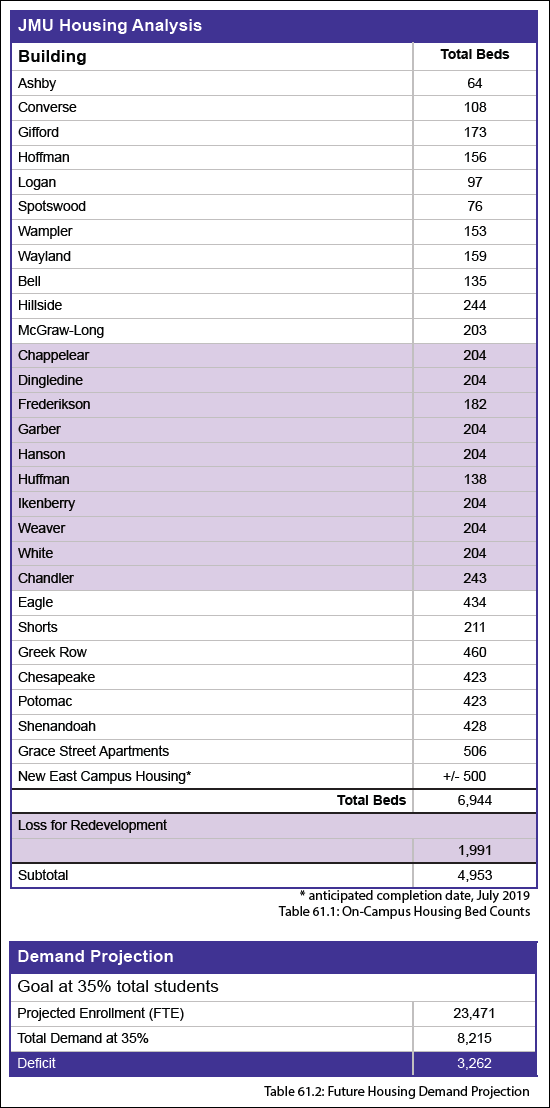 As shown above....
New layout of Village area residence halls....
| |
Harrisonburg could never have enough student housing! |
|
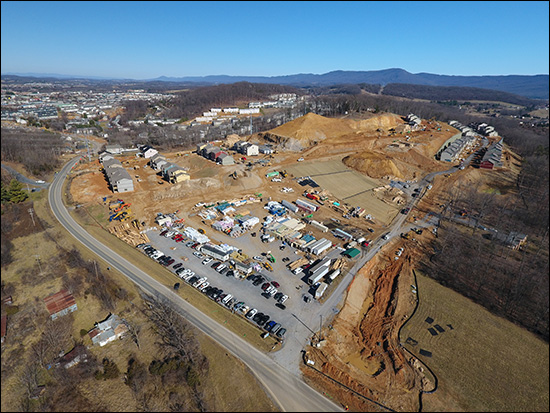 OK, OK, that's probably not true -- Harrisonburg probably does not have an infinite need for student housing. Just consider my title, then, to be an intro to all of the alternative perspectives that have been shared with me since I wrote these two posts.... Does Harrisonburg need more Off Campus Student Housing? Does New College Student Housing Increase the Demands on Local Elementary Schools? OK -- here goes -- all the reasons I might be wrong, and all of this new student housing might be OK, or even a good thing.... 1. JMU is growing! All of this student housing is necessary -- JMU is continuing to grow, and they are not building on campus fast enough for their growth, so the private sector must build and rent housing to students in order to meet that growing demand. 2. Denying growth just pushes it elsewhere. If the City decided to stop permitting new student housing communities to be built, that would just push developers to build them in the County, or push students to live in otherwise owner occupied neighborhoods. 3. This is an affordable way to get workforce housing. There isn't much truly affordable rental housing being built -- and older student housing complexes being effectively turned into workforce housing by virtue of students being attracted to new student housing communities is not necessarily a bad thing. It may be the most affordable way to create affordable or workforce housing. 4. Bring on the wrecking ball. If even more student housing is built, the rental rates will fall even lower on the oldest complexes, devaluing those properties to the point where it will make sense to just knock them down and build new housing -- thus, eliminating the older, outdated housing. 5. How much regulation do you want "the government" to do? If the government (planning commission, city council, staff) should start making judgement calls about how much student housing is too much student -- and thus regulating what landowners (and student housing developers) can and cannot do -- should they also start governing other segments of the private sector? Should they regulate how many hair salons exist? How many banks are permitted to operate? How many restaurants can open? How many Realtors can sell homes? :) OK -- again -- I don't necessarily agree with all of the perspectives above, but I believe it is important to consider these counterpoints when thinking about how our community should be planning for the future as it pertains to student housing, land use, property taxes, schools, etc. And, as I mentioned to a reader in response to their comments.... I don't know if new student housing projects should or should not be denied - but I think the local community needs to fully understand the impact of continuing to approve more student housing communities. If older student housing communities become workforce housing, great, no problem -- but let's realize that this is the result of approving new student housing communities, and make sure that infrastructure (schools, for example) are in place for the new workforce housing that we have indirectly created. | |
Does New College Student Housing Increase the Demands on Local Elementary Schools? |
|
 Traditional logic would say no -- the construction of new college student housing in Harrisonburg won't increase the load on elementary schools, as most college students do not have elementary school aged children.... Going a step further, I would guess that some local government staff and elected officials MIGHT (?) use this traditional logic when thinking about whether to approve rezonings, or other approvals, for new student housing to be built in the Harrisonburg area. But wait - what if the following sequence happens (thanks Deb, with some revisions)....
I think we have seen this happen over the past 20 years in Harrisonburg, in cycles, as large quantities of student housing is built in waves. And think about it, from the other direction, for a moment -- we all know that the local elementary school population is growing -- but why, and where? It's not as if local developers and builders are out building an extraordinary number of townhomes or starter homes for young families, causing an influx of new elementary school students. So -- if the elementary school population is rising, and it's not because of an increase in the stock of owner occupied real estate in Harrisonburg, then.... 1. Perhaps this elementary (or K-12, really) school enrollment growth is, contrary to what we'd otherwise believe, a direct result of an increase in college student housing. 2. Perhaps we need to think about the fiscal impact of educating more elementary (and then middle and high) school students when we think about approving yet another student housing complex. 3. Perhaps, if building new student housing when we might not really need it, leads to increased demands on our local K-12 schools, then maybe we need to pay more attention to whether that student housing is needed. Just some thoughts to ponder as we think about and plan for the future here in the City of Harrisonburg -- and Rockingham County. | |
| Older Posts |
Scott Rogers
Funkhouser Real
Estate Group
540-578-0102
scott@funkhousergroup.com
Licensed in the
Commonwealth of Virginia
Home Search
Housing Market Report
Harrisonburg Townhouses
Walk Through This Home
Investment Properties
Harrisonburg Foreclosures
Property Transfers
New Listings



